Evaluation of the Influence of Shaft Shape Errors on the Rotation Accuracy of Aerostatic Spindle—Part 1: Modeling
Abstract
:1. Introduction
2. Theoretical Model
2.1. Model of the UAFF
2.2. Model of the CIF
2.3. Construction of Shaft Cylinder
3. Calculation Settings
3.1. Selection and Processing of Data Sources
3.2. Parameters of Cylinder Construction
3.3. Settings of Numerical Calculation
4. Results and Discussion
4.1. Effect of the Roundness
4.2. Harmonic Analysis of Data Source
4.3. Effect of the Cylindricity
5. Conclusions
- The shape error of the cylindrical surface of the shaft will make it subject to UAFF during rotation. In general, the smaller the error, the smaller the UAFF. When the roundness deviation is ≤1.25 μm, and the cylindricity deviation is ≤2 μm, the influence of the shape error on the rotation accuracy of shaft is small enough.
- The CIF caused by the shape error is very small (<1 N), and the influence of this force on the rotation accuracy can be ignored. The magnitude of the CIF is determined by the shaft mass, rotation speed and the eccentricity of the center of mass relative to the center of rotation, so the calculation of the CIF is still necessary for an actual situation.
- The magnitude and stability of the UAFF on the shaft are determined by the actual shape of the shaft cylindrical surface. The harmonic analysis method can be used to analyze the shaft shape and predict the UAFF reasonably.
- Although the roundness deviation and cylindricity deviation given in this paper are not suitable for all types of aerostatic spindle, the analysis and calculation method in this paper can still provide useful guidance for the design and manufacturing of aerostatic spindles.
Author Contributions
Funding
Data Availability Statement
Conflicts of Interest
Appendix A
References
- Gao, S.; Cheng, K.; Chen, S.; Ding, H.; Fu, H. Computational design and analysis of aerostatic journal bearings with application to ultra-high speed spindles. Proc. Inst. Mech. Eng. Part J. Mech. Eng. Sci. 2017, 231, 1205–1220. [Google Scholar] [CrossRef]
- Cappa, S.; Reynaerts, D.; Al-Bender, F. Reducing the radial error motion of an aerostatic journal bearing to a nanometre level: Theoretical modelling. Tribol. Lett. 2014, 53, 27–41. [Google Scholar] [CrossRef]
- Yabe, H. A study on run-out characteristics of externally pressurized gas journal bearing: Rotor run-out characteristics. JSME Int. J. Ser. Dyn. Control. Robot. Des. Manuf. 1994, 37, 355–361. [Google Scholar] [CrossRef] [Green Version]
- Yabe, H. A study on run-out characteristics of externally pressurized gas journal bearing: Modified DF method for point-source solution. JSME Int. J. Ser. C Dyn. Control. Robot. Des. Manuf. 1994, 37, 362–368. [Google Scholar] [CrossRef] [Green Version]
- Zhang, S.; To, S.; Cheung, C.; Wang, H. Dynamic characteristics of an aerostatic bearing spindle and its influence on surface topography in ultra-precision diamond turning. Int. J. Mach. Tools Manuf. 2012, 62, 1–12. [Google Scholar] [CrossRef]
- Zhang, S.; To, S.; Wang, S.; Zhu, Z. A review of surface roughness generation in ultra-precision machining. Int. J. Mach. Tools Manuf. 2015, 91, 76–95. [Google Scholar] [CrossRef]
- Pande, S.; Somasundaram, S. Effect of manufacturing errors on the performance of aerostatic journal bearings. Wear 1981, 66, 145–156. [Google Scholar] [CrossRef]
- Stout, K.J. The Effect of Manufacturing Variations on the Performance of Externally Pressurized Gas-Lubricated Journal Bearings. Proc. Inst. Mech. Eng. Part J. Mech. Eng. Sci. 1985, 199, 299–309. [Google Scholar] [CrossRef]
- Bhat, N.; Barrans, S.; Kumar, A. Performance analysis of Pareto optimal bearings subject to surface error variations. Tribol. Int. 2010, 43, 2240–2249. [Google Scholar] [CrossRef] [Green Version]
- Cui, H.; Wang, Y.; Yue, X.; Huang, M.; Wang, W. Effects of manufacturing errors on the static characteristics of aerostatic journal bearings with porous restrictor. Tribol. Int. 2017, 115, 246–260. [Google Scholar] [CrossRef]
- Cui, H.; Wang, Y.; Yue, X.; Huang, M.; Wang, W.; Jiang, Z. Numerical analysis and experimental investigation into the effects of manufacturing errors on the running accuracy of the aerostatic porous spindle. Tribol. Int. 2018, 118, 20–36. [Google Scholar] [CrossRef]
- Wang, X.; Xu, Q.; Wang, B.; Zhang, L.; Yang, H.; Peng, Z. Effect of surface waviness on the static performance of aerostatic journal bearings. Tribol. Int. 2016, 103, 394–405. [Google Scholar] [CrossRef]
- Wang, X.; Xu, Q.; Huang, M.; Zhang, L.; Peng, Z. Effects of journal rotation and surface waviness on the dynamic performance of aerostatic journal bearings. Tribol. Int. 2017, 112, 1–9. [Google Scholar] [CrossRef]
- Sun, F.; Zhang, X.; Wang, X.; Su, Z.; Wang, D. Effects of Shaft Shape Errors on the Dynamic Characteristics of a Rotor-Bearing System. J. Tribol. 2019, 141, 101701. [Google Scholar] [CrossRef]
- Dimofte, F. Wave journal bearing with compressible lubricant—Part I: The wave bearing concept and a comparison to the plain circular bearing. Tribol. Trans. 1995, 38, 153–160. [Google Scholar] [CrossRef]
- Dimofte, F. Wave journal bearing with compressible lubricant—Part II: A comparison of the wave bearing with a wave-groove bearing and a lobe bearing. Tribol. Trans. 1995, 38, 364–372. [Google Scholar] [CrossRef]
- Charitopoulos, A.; Efstathiou, E.; Papadopoulos, C.; Nikolakopoulos, P.; Kaiktsis, L. Effects of manufacturing errors on tribological characteristics of 3-D textured micro- thrust bearings. CIRP J. Manuf. Sci. Technol. 2013, 6, 128–142. [Google Scholar] [CrossRef]
- Dal, A.; Karaçay, T. Effects of angular misalignment on the performance of rotor-bearing systems supported by externally pressurized air bearing. Tribol. Int. 2017, 111, 276–288. [Google Scholar] [CrossRef]
- Gao, Q.; Chen, W.; Lu, L.; Huo, D.; Cheng, K. Aerostatic bearings design and analysis with the application to precision engineering: State-of-the-art and future perspectives. Tribol. Int. 2019, 135, 1–17. [Google Scholar] [CrossRef]
- Dupont, R. Robust rotor dynamics for high-speed air bearing spindles. Precis. Eng. 2015, 40, 7–13. [Google Scholar] [CrossRef]
- Song, M.; Azam, S.; Jang, J.; Park, S.S. Effect of shape errors on the stability of externally pressurized air journal bearings using semi-implicit scheme. Tribol. Int. 2017, 115, 580–590. [Google Scholar] [CrossRef]
- Hamrock, B.J.; Schmid, S.R.; Jacobson, B.O. Fundamentals of Fluid Film Lubrication; CRC Press: Boca Raton, FL, USA, 2004. [Google Scholar]
- Morosi, S.; Santos, I.F. Active lubrication applied to radial gas journal bearings. Part 1: Modeling. Tribol. Int. 2011, 44, 1949–1958. [Google Scholar] [CrossRef]
- Zhang, G.; Zheng, J.; Yu, H.; Zhao, R.; Shi, W.; Wang, J. Rotation Accuracy Analysis of Aerostatic Spindle Considering Shaft’s Roundness and Cylindricity. Appl. Sci. 2021, 11, 7912. [Google Scholar] [CrossRef]
- Kang, Y.; Wang, F.; Qiu, Z.; Zhang, H.; Shi, Z.; Gu, F. A novel iteration method for estimation of bearing dynamic coefficients in the rotor-bearing system. Int. J. Hydromechatronics 2021, 4, 277–294. [Google Scholar] [CrossRef]
- Jie, D.; Zheng, G.; Zhang, Y.; Ding, X.; Wang, L. Spectral kurtosis based on evolutionary digital filter in the application of rolling element bearing fault diagnosis. Int. J. Hydromechatronics 2021, 4, 27–42. [Google Scholar] [CrossRef]
- Lo, C.Y.; Wang, C.C.; Lee, Y.H. Performance analysis of high-speed spindle aerostatic bearings. Tribol. Int. 2005, 38, 5–14. [Google Scholar] [CrossRef]
- Zhang, P. Accuracy prediction model of an orifice-compensated aerostatic bearing. Precis. Eng. 2021, 72, 837–846. [Google Scholar] [CrossRef]

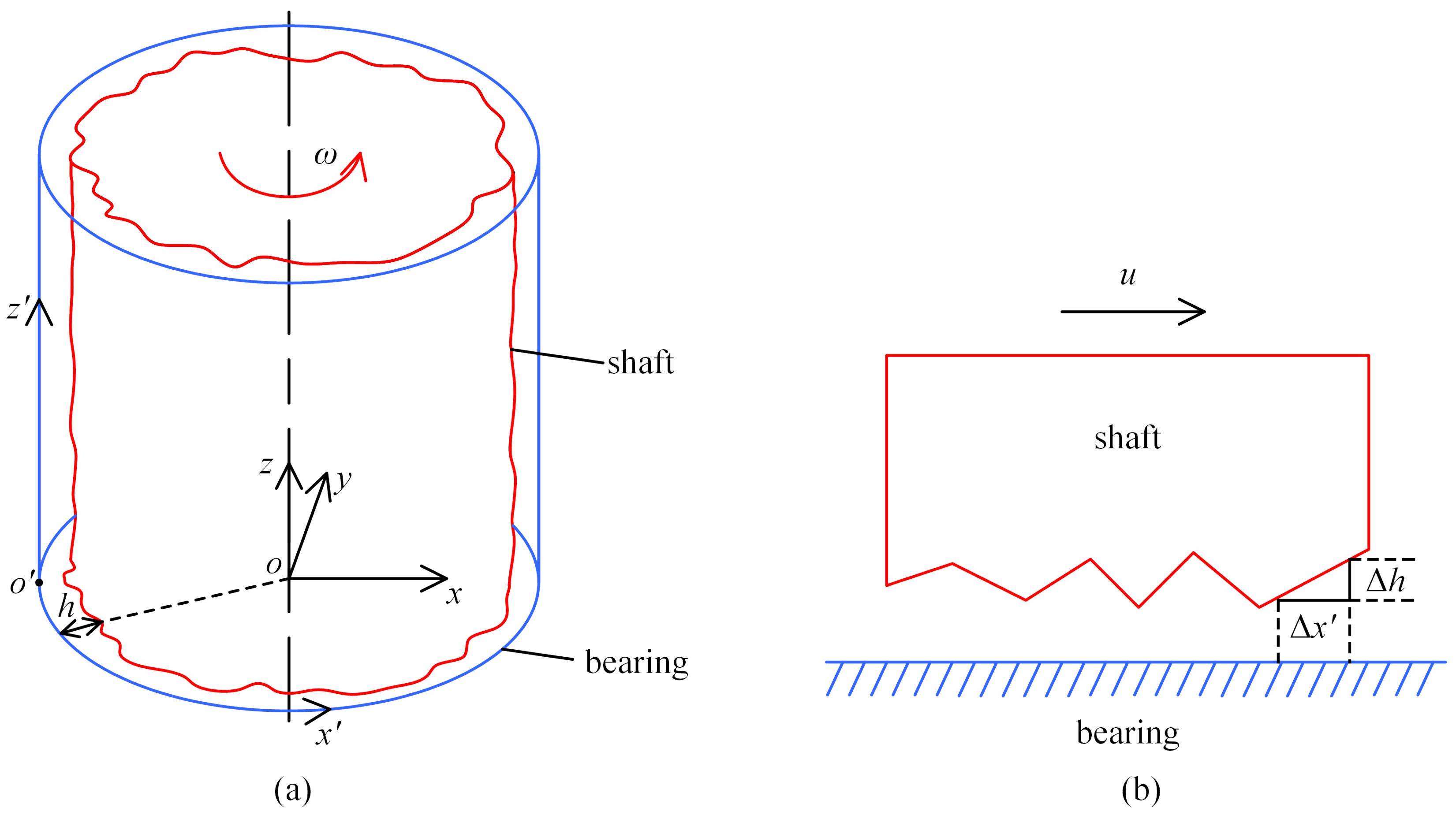
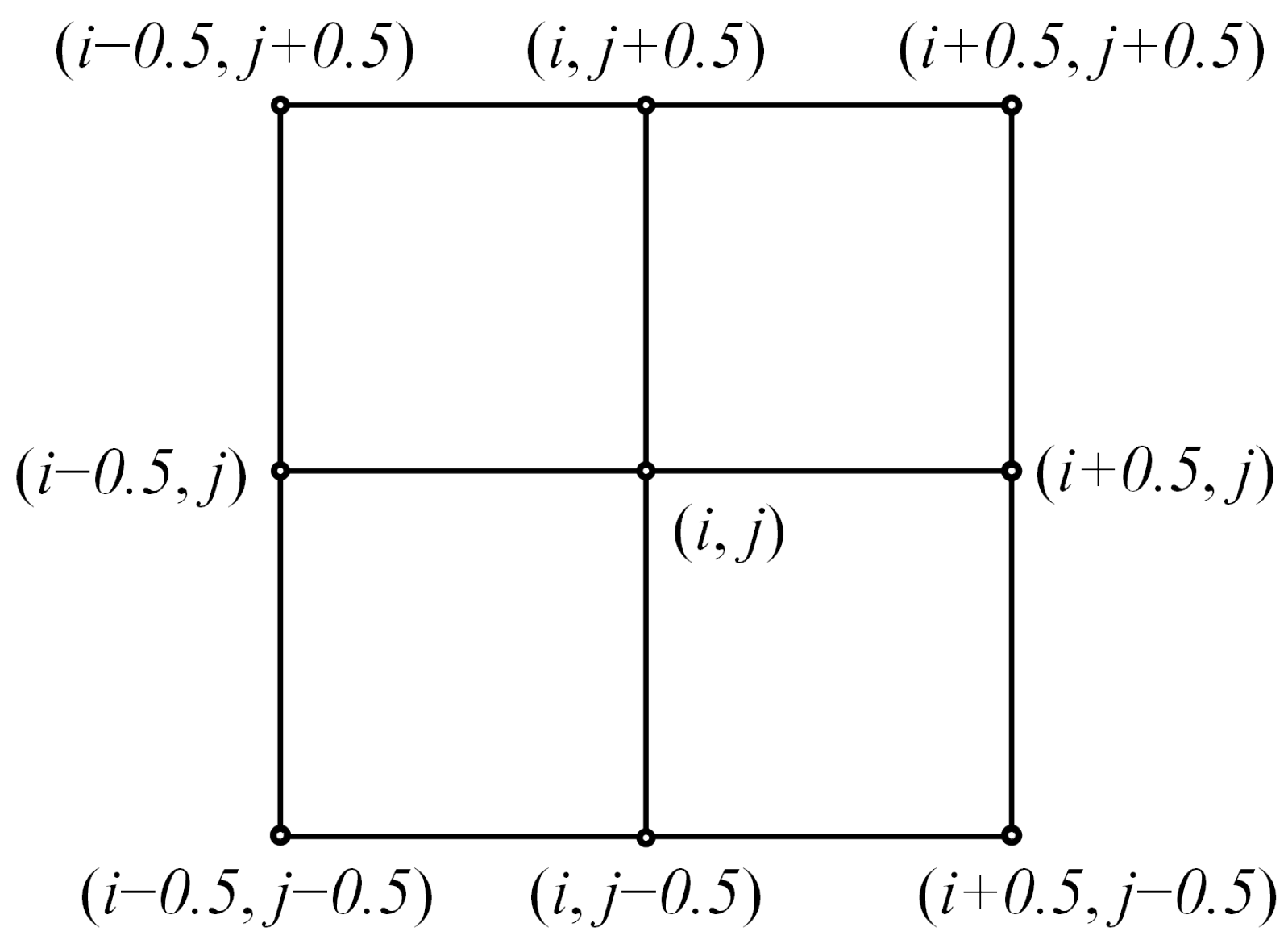
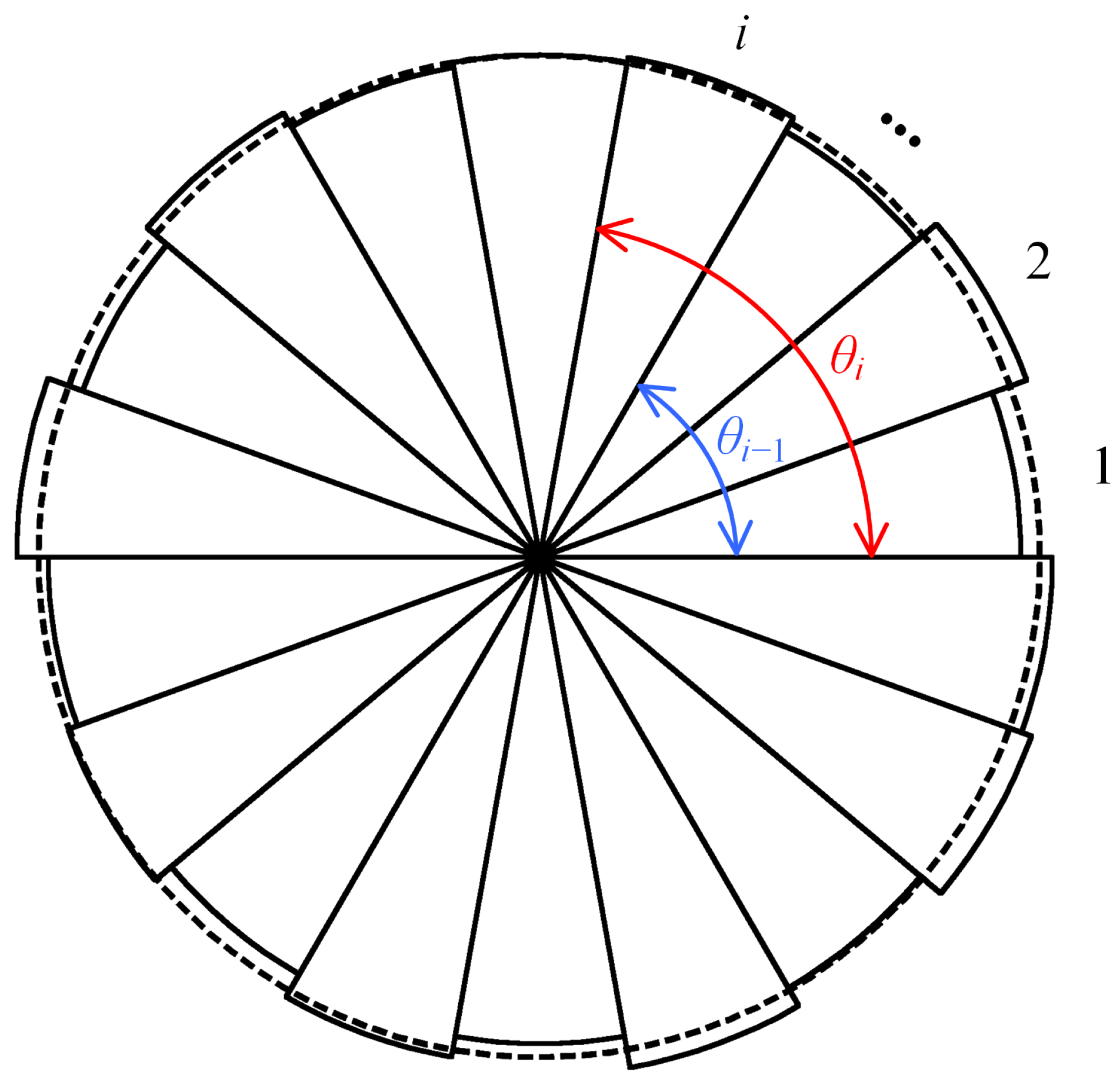
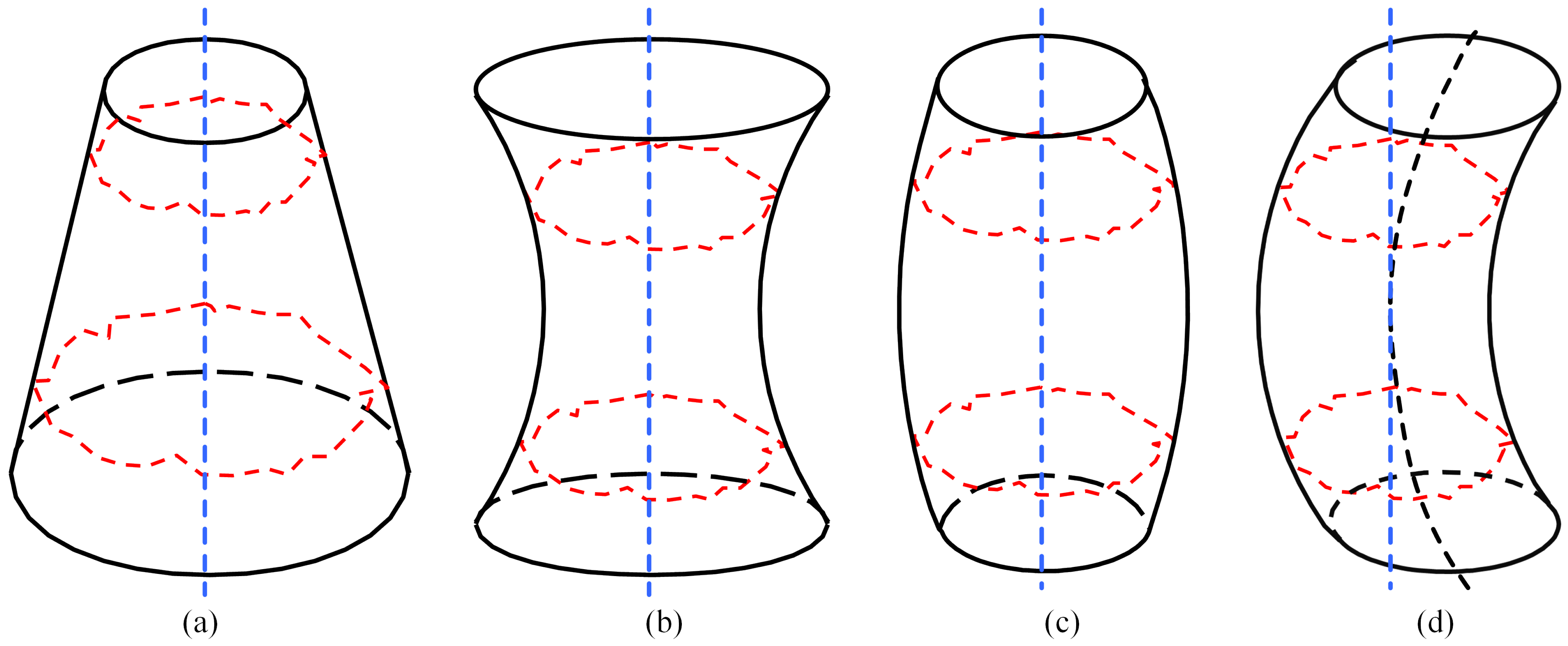
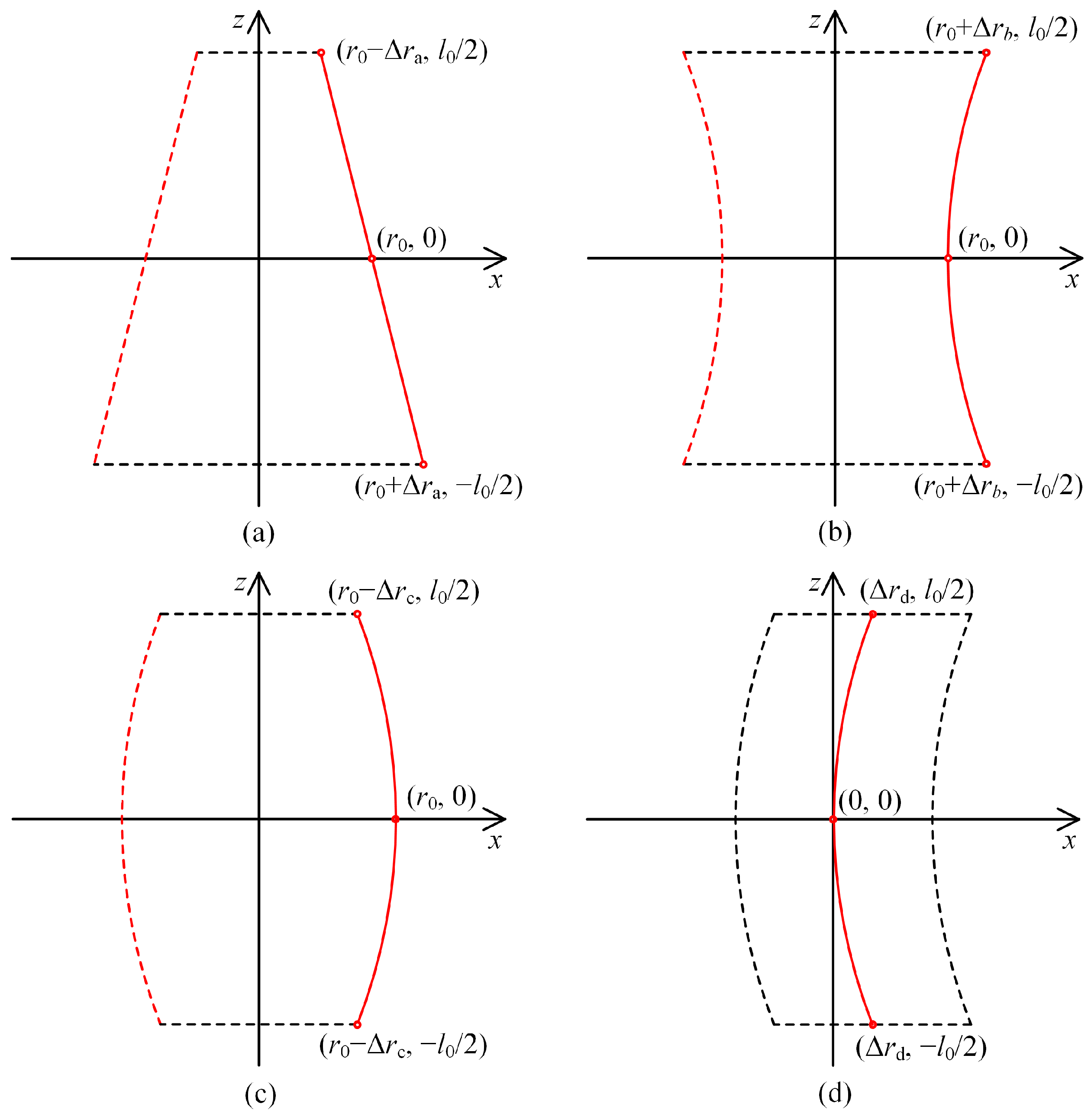







| Cylindricity Deviation | 1.5 | 2 | 2.5 | 3 | ||||||||
|---|---|---|---|---|---|---|---|---|---|---|---|---|
| Data source | B | C | D | B | C | D | B | C | D | B | C | D |
| Roundness deviation | 0.8 | 1 | 1.25 | 0.8 | 1 | 1.25 | 0.8 | 1 | 1.25 | 0.8 | 1 | 1.25 |
| 0.3 | 0.2 | 0.08 | 0.55 | 0.45 | 0.33 | 0.8 | 0.7 | 0.58 | 1.05 | 0.95 | 0.83 | |
| 0.6 | 0.4 | 0.15 | 1.1 | 0.9 | 0.65 | 1.6 | 1.4 | 1.15 | 2.1 | 1.9 | 1.65 | |
| Parameters | Value |
|---|---|
| Bearing diameter (D/mm) | 50 |
| Bearing length (L/mm) | 50 |
| Nominal radius clearance (/mm) | 0.01 |
| Orifice diameter (d/mm) | 0.16 |
| Supplied pressure (/) | 4 |
| Air dynamic viscosity (/Pa·s) | 1.845 × |
| Shaft material | 38CrMoAl |
| Shaft density (/kg/m) | 7.85 × |
Publisher’s Note: MDPI stays neutral with regard to jurisdictional claims in published maps and institutional affiliations. |
© 2022 by the authors. Licensee MDPI, Basel, Switzerland. This article is an open access article distributed under the terms and conditions of the Creative Commons Attribution (CC BY) license (https://creativecommons.org/licenses/by/4.0/).
Share and Cite
Zhang, G.; Zheng, J.; Yu, H.; Chen, T.; Zhang, K.; Dou, G. Evaluation of the Influence of Shaft Shape Errors on the Rotation Accuracy of Aerostatic Spindle—Part 1: Modeling. Electronics 2022, 11, 1304. https://doi.org/10.3390/electronics11091304
Zhang G, Zheng J, Yu H, Chen T, Zhang K, Dou G. Evaluation of the Influence of Shaft Shape Errors on the Rotation Accuracy of Aerostatic Spindle—Part 1: Modeling. Electronics. 2022; 11(9):1304. https://doi.org/10.3390/electronics11091304
Chicago/Turabian StyleZhang, Guoqing, Jianming Zheng, Hechun Yu, Ting Chen, Kai Zhang, and Guozhu Dou. 2022. "Evaluation of the Influence of Shaft Shape Errors on the Rotation Accuracy of Aerostatic Spindle—Part 1: Modeling" Electronics 11, no. 9: 1304. https://doi.org/10.3390/electronics11091304






